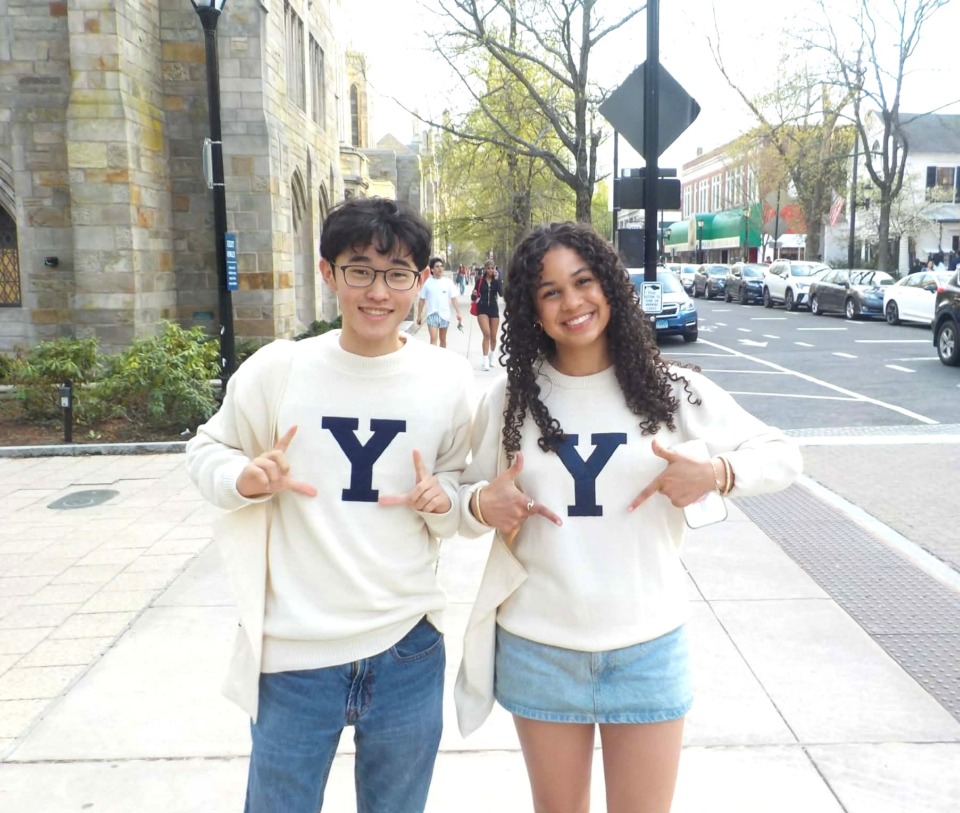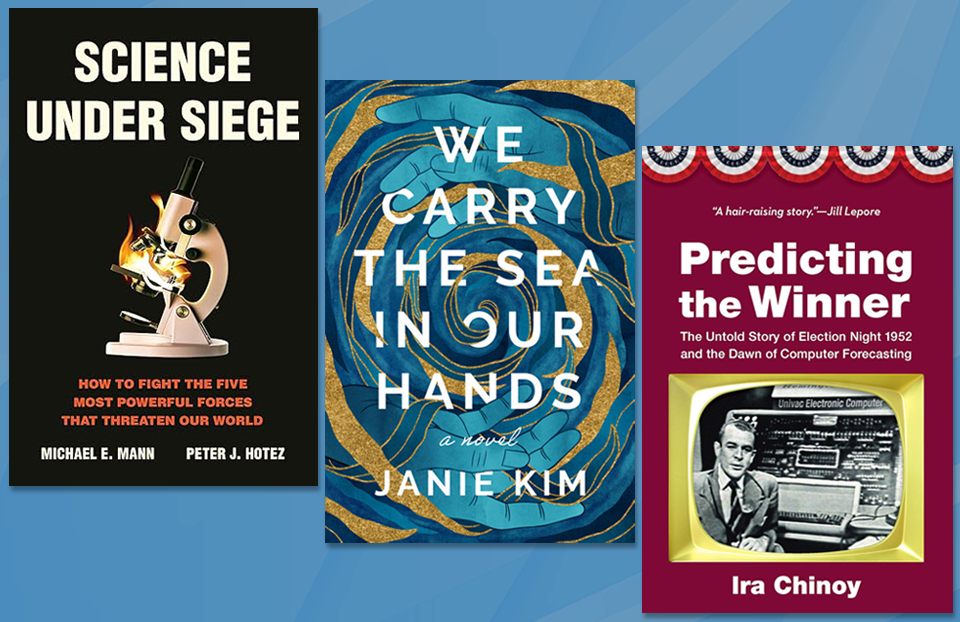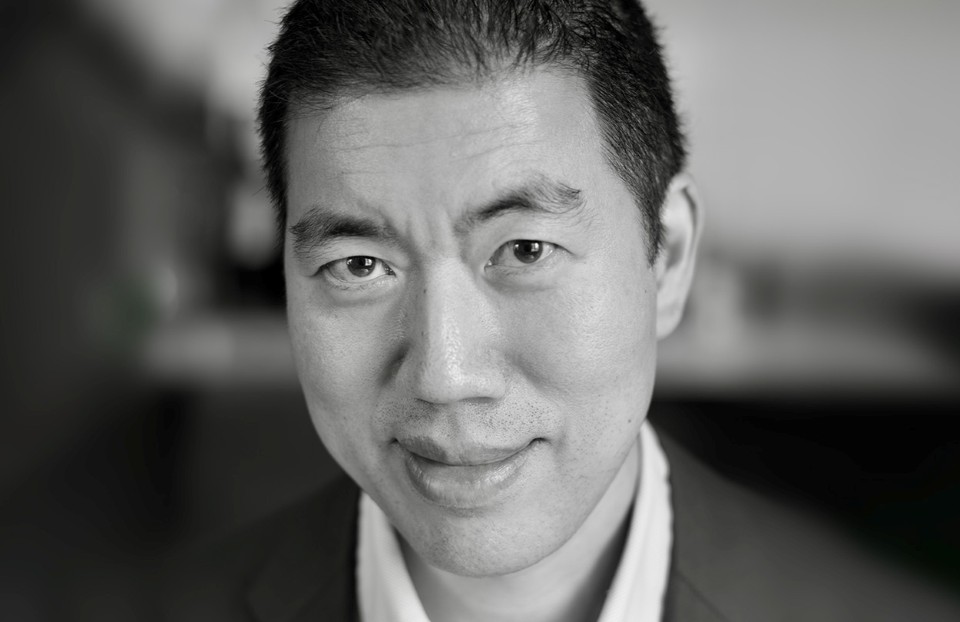Native American Voices in Science: How Ava Cummings Is Giving Back to Her Community

November is Native American Heritage Month, a time to honor and uplift Indigenous peoples and the many ways they strengthen their communities, especially the young leaders shaping the future through science, culture and creativity.
Growing up in North Carolina, Ava Cummings encountered science and medicine in two distinct worlds: her father, a chemical engineer, introduced her to modern pharmaceuticals, while her mother shared traditional Native remedies passed down through their Lumbee heritage. She remembers her mother preparing healing concoctions in the kitchen whenever she or her siblings were sick. That blend of traditions shaped Ava’s curiosity about the connections between Indigenous practices and modern science and inspired her to explore community-specific health issues. With an Indigenous background and a family history in agriculture, Ava also developed an early awareness of how people are connected to the natural world, a perspective that helped frame her approach to her research.
Ava’s research on STAC3 not only earned her second place and $175,000 at the 2025 Regeneron Science Talent Search, the U.S.’s oldest and most prestigious science and math competition for high school seniors but also reflects her commitment to uplifting Native voices. For her work, Ava has been featured across many news outlets including in local news in North Carolina as well as national news outlets such as NPR and Native America Calling.
Now a freshman at Yale, Ava continues to celebrate her family background while pursuing research and other campus initiatives. We caught up with her recently to learn more about how her upbringing shapes her work, her inspirations and her vision for the future.
How has your Native heritage shaped the way you think about science and the questions you want to explore?
I grew up in a household where modern medicine and traditional medicine from my culture were very intertwined. My dad is a chemical engineer working in the pharmaceutical industry, so I was very aware of his work regarding various diseases. My mother was very into traditional, herbal remedies. Being interested in science from a young age, I often thought about how the traditions practiced by my parents and medicine as it is more generally practiced intersect.
What does Native American Heritage Month mean to you, and how do you hope your research contributes to awareness of STAC3 and other conditions that affect your community?
To me, Native American Heritage Month is an opportunity for me to share my heritage with those around me who may not have much experience with indigenous culture. On Yale’s campus, our dining halls had an Indigenous People’s Day dinner, where they served foods like three sisters stew (corn, beans and squash) and wojapi. Just recently, we also hosted our annual powwow and have had several teach-ins and bonding events at our cultural center. Putting indigenous traditions into practice on my college campus has been a great opportunity for me to share my culture with my peers.
Through my research on STAC3, I hope to bring awareness not only to indigenous culture as a whole, but also to indigenous culture in the context of healthcare and medicine. By researching STAC3, I was able to harness my tribe’s indigenous knowledge to give back to my community, and I hope that this builds awareness towards the need to research population-specific diseases and incorporate traditional medicines within modern practice.
Like Native American Heritage Month, it is my hope that my research shows that indigenous people are still here and that we are creating, learning, and contributing to fields of science.

Since the Regeneron Science Talent Search, what have you been up to, and how has your first year at Yale shaped your interests?
Since coming to Yale, I’ve really afforded myself the freedom to branch out and try new things! As of the first semester, I am involved with the Native American Cultural Center on campus and have found a great sense of community there. I have also started working in research and development for a student-run startup called Simplex that sells single-stranded DNA ladders. But by far my favorite thing I’ve gotten involved with at Yale is an American folk music band called Tangled Up in Blue, where I sing in the Alto section and have also been learning guitar. We do gigs at Yale and around the area, and I am super excited for spring break when we get to go on tour.
At Yale, I actually get to see some of my fellow finalists quite often! I am taking a seminar on Canadian history with Logan Lee, who I also spend a lot of my time with in the dining hall or in the Native American Cultural Center. I also take Organic Chemistry with Vivek Malik, and we often find ourselves having fun little debates at the dinner table with our classmates after our study halls on Wednesday nights. I am super grateful to have some of my STS friends here on campus with me, and especially during the first few months, it has been great to see a familiar face as I am adjusting to college life. But even those who are off at other colleges, I am still able to maintain great relationships with them. My friends and fellow finalists Angeline Zhao and Ashley Zhu are coming to stay with me for the Harvard-Yale game, and I can’t wait to see them!

If you could create a dream research tool or experiment with no limits, what would you build?
One of my biggest curiosities is the ocean, and I believe it would be super cool if we had the technology to perform really in-depth research on what kind of animals and organisms exist in some of the deepest parts of the ocean (while being minimally invasive and eco-friendly of course). Someday, I really would love to work with jellyfish or hydra as a model organism in stem cell or regeneration research.
What is one book, film or creative work by a Native creator that has inspired you lately or in your life more generally?
Two books by Indigenous authors that have inspired me are “Braiding Sweetgrass” by Robin Wall Kimmerer and “Firekeeper’s Daughter” by Angeline Boulley, which also inspired the approach I took for my research project. “Braiding Sweetgrass” hits close to home for me because it uses anecdotes from Kimmerer’s experience as an Indigenous woman to explore how traditional Indigenous medicinal practices exist as “ways of knowing” and intersect with the broader field of scientific knowledge.
“Firekeeper’s Daughter” is a book I read in my sophomore year of high school, and it remains one of my favorite books to this day. It follows the main character, Daunis, who confronts drug abuse within her tribe, and a side plot involves her interest in traditional Indigenous medicinal practices. The novel ends with a time jump a few years into the future, where she becomes an ethnobotanist. Kimmerer’s book prompted me to seriously consider how I could explore the intersection of science and traditional Indigenous medicinal practices in my own life, and, combined with my inspiration from how Daunis was able to serve her community in Boulley’s novel, I found a literary sense of community when pursuing my project idea.
Why is it important to you to uplift Native voices and knowledge in STEM?
I find it important to uplift Native voices and knowledge in STEM because I believe that Indigenous perspectives can contribute generational knowledge and transform the way we approach science. An Indigenous perspective in science can reshape the way we ask questions, form methodologies, and draw conclusions. By continuing to diversify perspectives in science, we not only improve the field’s contribution to new communities but also improve science’s contribution to our global community.


